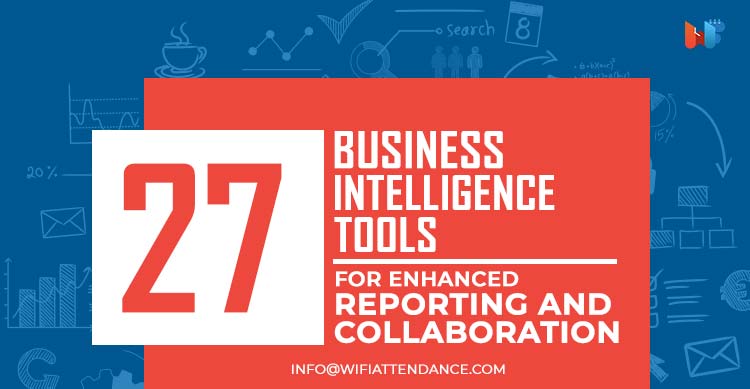A successful enterprise will always bank on a good business intelligence tool that helps them to compete well in their industry. Despite having a well skilled team of professionals, having a BI tool gives you an upper hand in the market.
This can help you to easily derive insights from data, help you understand the changing trends and assist you in making smarter decisions. Tactical and strategic decisions at the right time can in fact help a business to make a hit in impressive time frames.

Are you looking for a good business intelligence tool for your venture? Here is a list of the top BI tools available in the market that is used by successful companies.
The right combination of predictive analytics and real-time business intelligence used by SAP helps your business to get timely insights.
Read Also: 51 Online Collaboration Tools to Enhance Team Productivity
The right combination of predictive analytics and real-time business intelligence used by SAP helps your business to get timely insights.
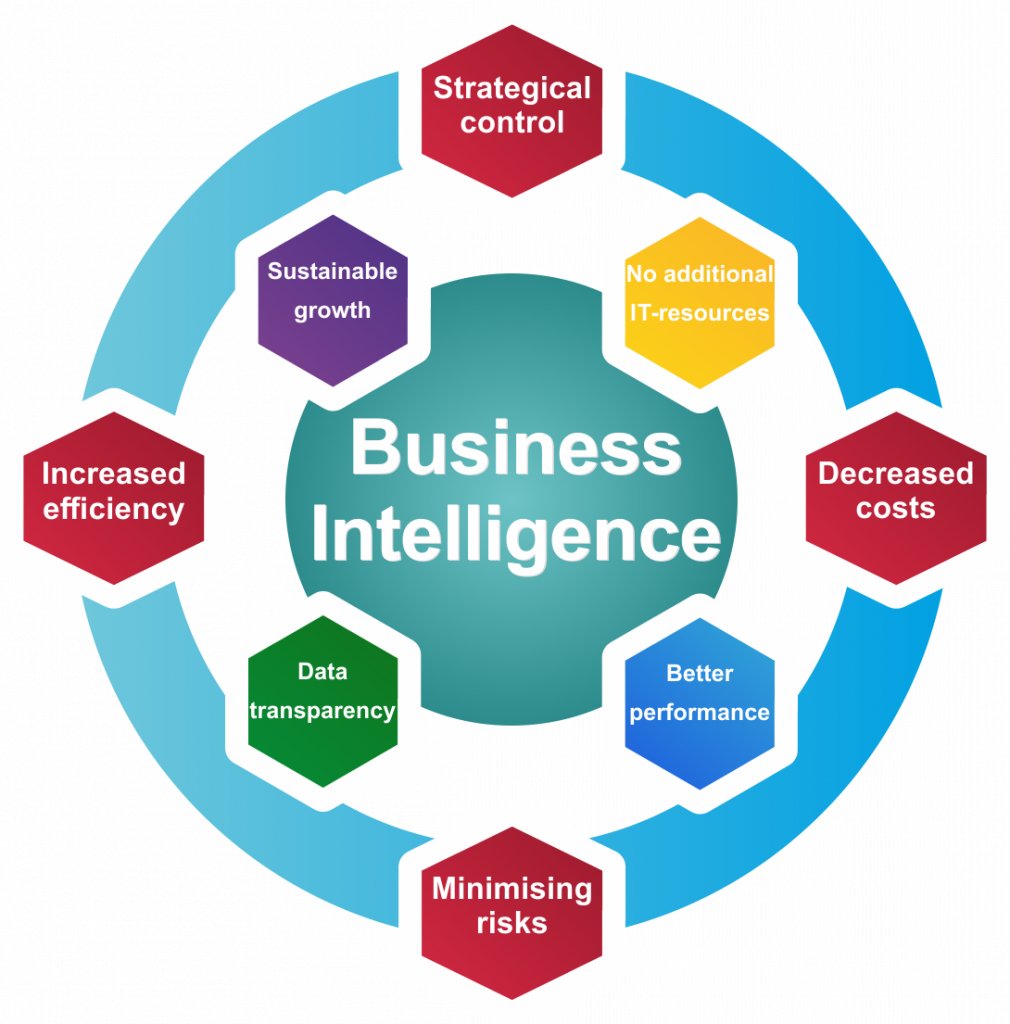
- Features machine learning and advanced analytics solutions
- Data visualisation & analytics applications is the key
- Provides timely reporting and analysis
- This one platform for all functionalities even offers office integration and mobile analytics
This is a clear and accurate business insights system that is designed to fulfill diverse business needs. Large and complex data from reliable sources can be extracted easily to present as professional reports.
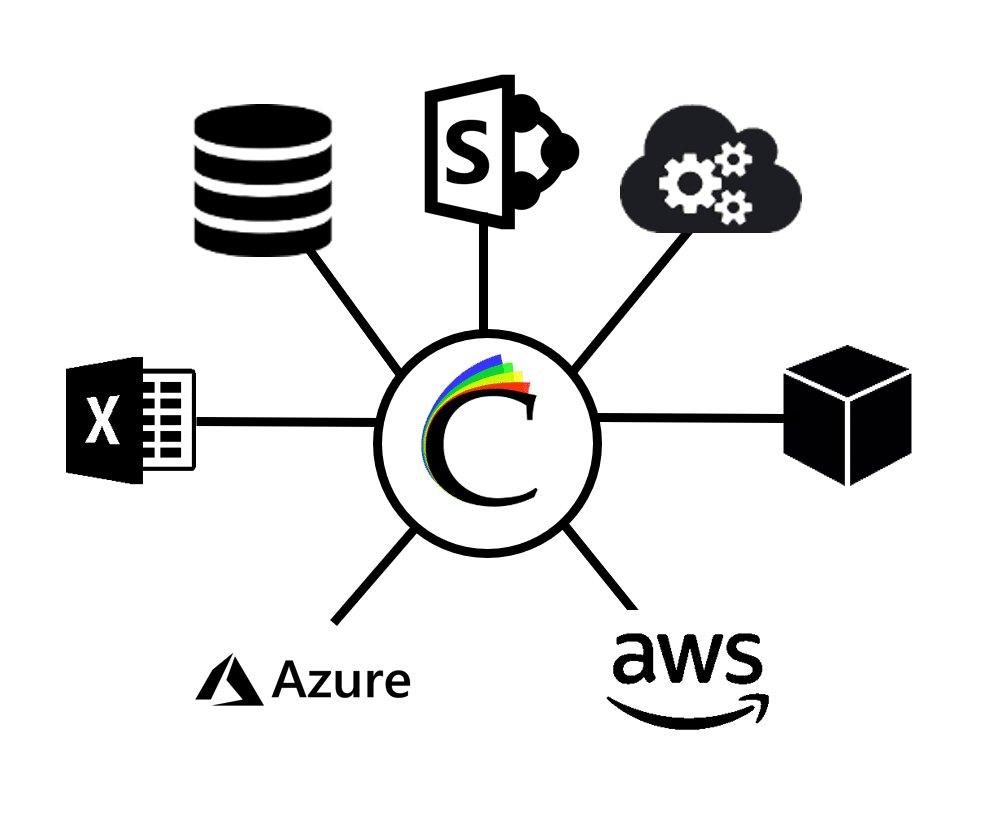
- Offers predictive analysis
- Features Key Performance Indicators and graphical data presentation
- Enables to create strategic planning
This is a comprehensive data analytics tool that features high speed dash boarding that helps your business to monitor trend and identify new opportunities.
- Easy to use and maintain
- Allows connection to one or various sources despite spreadsheet or cloud-based data
- Easy access from desktop or mobile
- Self-service analytics and real time report design improves productivity
4. BOARD
This is an effective business management intelligence tool which is designed with features for corporate performance management in addition to business intelligence.
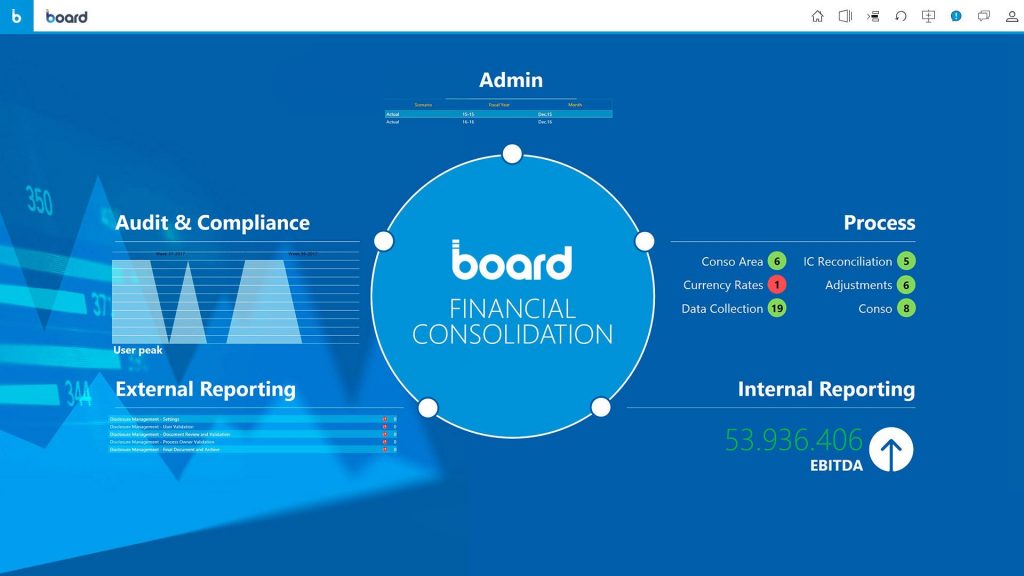
- A single platform allows you to plan, predict, analyse and stimulate
- Enables to build customized planning and analytical applications
- Effectively drive digital transformation across the business
This is a highly configurable and easily extensible data analytics platform that comes with a scalable interface making it suitable for small and large companies.
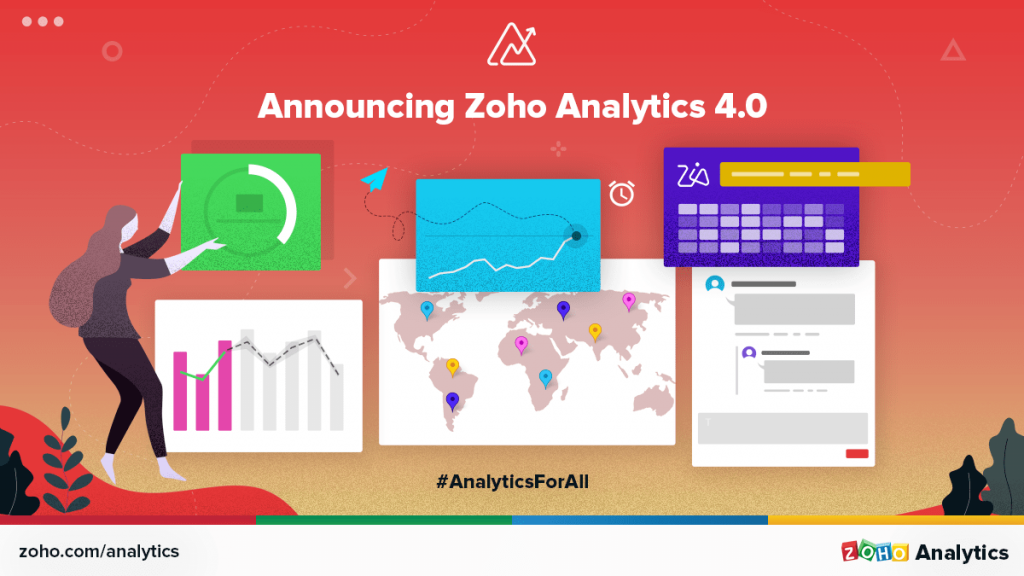
- Data can be synced and imported to system easily
- It comes with built-in collaboration tools and open API Capabilities
- Features robust visualizations
6. Sisense
Its extensive set of features and scalable architecture to fit any business size makes it unique among its competitors. The interface of the system is simple for beginners but powerful for professionals.
- Visualizes and analyses both big and disparate datasets
- Helps to build interactive dashboards
- Use filtering and calculations to identify critical metrics
7. AnswerDock
This is a cloud-hosted analytics platform that comes with data mining algorithms and features natural language processing and artificial intelligence to suit businesses of all sizes.
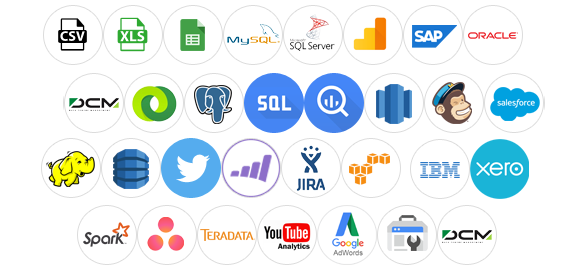
- Secure unified database allows better data governance
- Comes with extensive customization options and fast data search
- Features convenient data preparation and real-time computations
8. Jaspersoft
This is a flexible and cost effective open source BI tool that empowers business enthusiasts to make better decisions.
- Features highly interactive web-based reports, analysis and dashboards
- Offers data visualization, reporting, and data integration
- Key performance indicators and problem indicators enables smart decision making
9. Hotjar
This is a comprehensive analysis and feedback tool that comes with excellent features to visualize user behaviour and analyze user insights.

- Features behaviour logic, heat maps, cross-device surveys, one-on-one testing and visitor recordings
- Comes with robust feedback features and multi-language support
- It is built for mobility and features simplified research and testing
It is one of the top business intelligence tools and a well-integrated one-stop platform that features advanced predictive analytics.
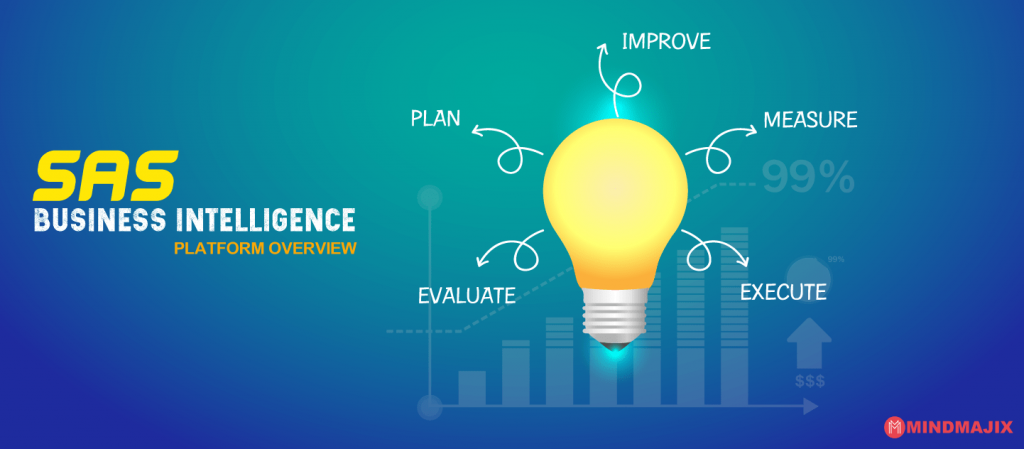
- Features excellent data integration, scalability and multiple query languages
- Offers customization through a rich set of APIs
- Comes with advanced analytics tools, performance management and MDM
11. QlikView
This is an easy to use and robust business intelligence tool that automatically generates custom dashboards and personalized reports.
- Massive data is explored using associative data indexing
- Hidden trends and patterns are easily discovered to enable sound business actions
- Supports multiple file types and data sources
12. Yellowfin BI
This is a single integrated solution designed for companies that run different industries to enhance their business decisions.
- Dashboards can be accessed from company intranet, web page, wiki, or mobile device
- Easy to access and monitor features enables faster and smarter collective decision-making.
- Interactive reports and data-rich presentations make insights effective
13. BIRT
This is a comprehensive open source business intelligence and reporting tool which assures user autonomy and self-sufficiency.
- Analyze billions of records in seconds
- No coding required and offers easy to use visuals
- No complex data modelling is needed
14. Dundas BI
This is an amazing enterprise-ready BI platform that enables you to create and view reports, interactive dashboards and scorecards.
Read Also: 15 Tools for Improving Employee Productivity
- Features Ad hoc reporting tools and smart drag and drop tools
- Offers predictive and advanced data analytics
- Data can be visualized as maps
- Customizable data visualizations and easy integration of data sources
This is a powerful data intelligence platform that is designed for flexible and fast transformation from disparate sources.
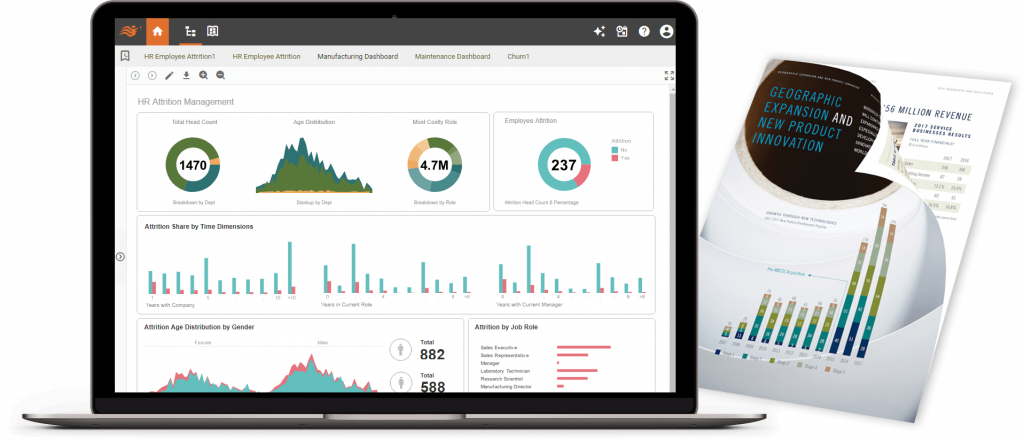
- Streamlined apps can be created for data consumption and updating
- Paginated reports are generated with embedded business logic
- Provides secure and customized levels of data exploration
16. TIBCO Spotfire
This is a self-service business intelligence tool that enables easy and effective collaboration with the digital team.
- Features amazing data visualisation and executive dashboards
- Users are enabled to define their own KPIs
- Allows easy integration with CRMs, ERPs, Excel and Access
17. Birst
This is an awesome web-based networked BI and analytics tool that collects insights from different teams and enables to make informed decisions.
- Definitions and key metrics can be maintained using unified semantic layer
- Rapidly refine enterprise data and creates corporate wide metrics
- Promotes individual agility and transparently governed working
18. Systum
This is a great intelligence tool that enables enterprises to consolidate and streamline processes across diverse B2C and B2B channels.
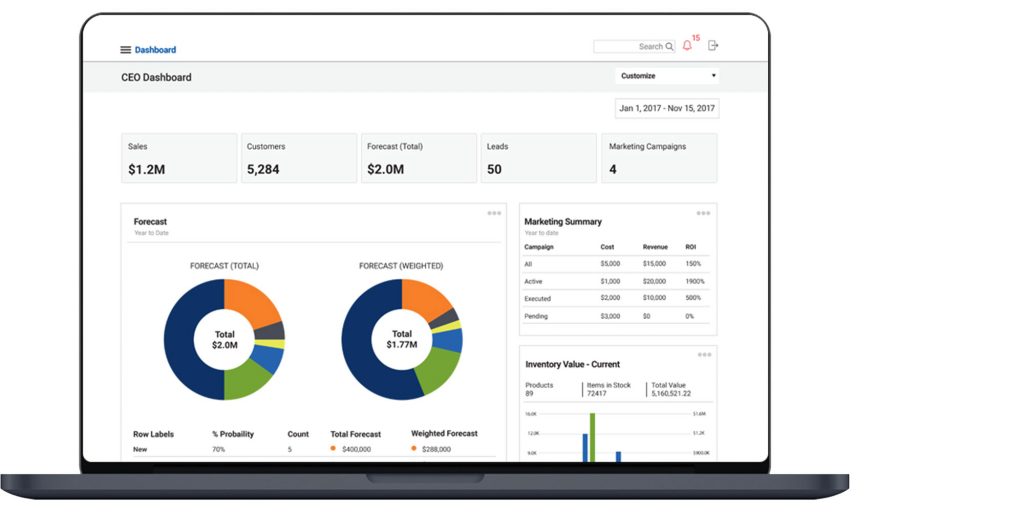
- Comes with built-in CRM and amazing sales features
- Features a B2B portal and Inventory Management
- Boosts productivity and efficiency in no time
19. Netlink
This is a top edge advanced analytics and cloud-based tool that offers exceptional data visualizations to help make smarter decisions.
- Features quick visualization and customization of dashboards across multiple mobile devices
- Offers agility and unlimited scalability
- Insights invisible in operational reports are mined and delivered
This web-based business analytics tool is great for diverse business platforms that offer data visualization at its best.
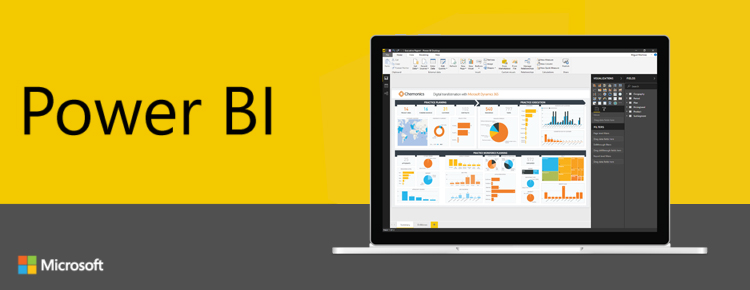
- Changing trends can be identified in real time
- Brand new connectors enhances your level in campaigns
- Apps can be easily integrated and delivers reports and real-time dashboards
21. ClicData
This flexible business intelligence dashboard solution that enables end users to build reports and dashboards are designed for small and medium businesses.
This flexible business intelligence dashboard solution that enables end users to build reports and dashboards are designed for small and medium businesses.
- Insights, data, metrics, and reports can be shared among individuals and groups
- Progress and performance of projects are reported on a regular basis
- Features extensive data manipulation and Live Alerts on dashboards
22. Looker
This is another great BI tool that features easy integration with SQL database or warehouse to suit start ups, mid size and enterprise grade ventures.
- Comes with ease-of-use features and handy visualisations
- Offers reliable support and powerful collaboration features
- Data and reports can be easily shared and integrated
23. Clootrack
This is a comprehensive data analytics platform that makes the best use of artificial intelligence to help businesses of all types to effectively analyze the client perception.

- Features real-time data collection and offers easy to comprehend reports and analyses
- Enables to easily keep up with emerging customer trends
- Improve products and services with valuable timely insights
24. ReportPlus
This is an effective analytics solution that focuses exclusively on data visualization and it’s amazing features help even technologically challenged individuals to make successful business.
- Comes with easy-to-use interface that help get insights faster
- Features on-the-go accessibility and real-time data connection
- Large data sets can be processed quickly and encryption secures your database
25. Oracle BI
This is a comprehensive robust enterprise portfolio of applications and technology for business intelligence that features almost all BI capabilities.
- Features proactive intelligence, dashboards, alerts and ad hoc
- Large data volumes from even non-Oracle sources can be easily analyzed
- Comes with integrated array of query, reporting and analysis
26. WebFOCUS
This is an effective BI and Analytics platform that enables every team of your organization to make more confident and smarter business decisions.
- Analytic apps and tools can be easily accessed from any mobile device or browser
- Enterprises are enabled to use data more strategically
- It is comprehensive, scalable, and proven
- Assures efficient security, administration and governance
27. icCube
This is one of the best available SaaS end to end BI platforms that integrates seamlessly with any application.
- Comes with ability to graphically design widgets from scratch
- Easily connect and combine any custom data source
- Comes with on-the-fly-authentication and authorization
Read Also: Top 26 Apps For Internal Employee Communication in 2019
Several versions of such tools are offered now that can fit businesses of any size and shapes. There will also be a guidance team provided by most of such companies offering these tools that help you make the right choice of tool depending on your business size and requirements.
Gaining insights of the customer behaviour and the overall growth of the business is the key of using BI tools. Most of these tools are easily accessible and flexible to use and its wise usage can in fact give you impressive turn over in short time.
